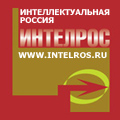Выпуски Международного журнала исследований культуры начиная с № 4 за 2020 год находятся на новом сайте по адресу: https://culturalresearch.ru/
|
 |
Любовь Дмитриевна БУГАЕВА Доктор филологических наук, доцент Филологический факультет, Санкт-Петербургский государственный университет Санкт-Петербург, Россия |
 |
Екатерина Юрьевна ПРОТАСОВА Доктор педагогических наук Факультет искусств, Университет Хельсинки Хельсинки, Финляндия |
«Рассказывать истории при помощи демонстрации движущихся картин» – так на заре эпохи кино была сформулирована идея кинематографа. С тех пор изменился не только кинематограф – появились новые форматы рассказывания, в том числе телевизионные. Чем же отличаются истории на кино- и телеэкране: в фильме и франшизе, с одной стороны, в телефильме и сериале – с другой? Дэвид Бордуэлл однажды заметил: «В фильм ты входишь, затем из него выходишь и продолжаешь жить своей жизнью. Телевидение – это как долгие отношения, они или внезапно заканчиваются, или мы расстаемся с ними с чувством сожаления. Так или иначе, но телевидение неизбежно разбивает твое сердце»(Bordwell, D.). Телевизионный формат, особенно формат телесериала, приближает персонажей к зрителю, а самые иммерсивные тексты – это, как известно, тексты наиболее знакомые (Ryan, M.-L.).Что в таком случае меняется в плане содержания историй и способов их рассказывания?
Современный телеэкран перенасыщен сериальной продукцией; в стремлении завоевать внимание зрителя западные сериалы конкурируют с российскими, а сериалы в целом – с кинематографом. В конкурентной борьбе рождаются новые стратегии, новые формы, новые стили… Специальный выпуск журнала ставит целью исследование специфики языка современного сериала на фоне языка кино последних десятилетий. Эта специфика проявляется на разных уровнях, начиная от общей архитектоники рассказываемых историй до отдельных составляющих их элементов. Появляются новые стили, новые герои и темы, осваиваются разнообразные времена и пространства, создаются способы их конструирования. Нас интересует, какими нарративными стратегиями пользуется телевидение, лишенное, несмотря на существенный технологический прогресс, возможностей, которыми обладает кинематограф. Как современный телесериал, российский и западный, конструирует пространство и время, создает ощущение «каково это» быть кем-то или чем-то? Как именно история, большая и малая, чужая и своя, превращается в нарратив на большом и малом экране? Какими способами возможно включить телезрителя в эмоциональное переживание происходящего на экране? Сравнивая кино и телевидение сегодня, важно понять, как проявляется ограниченность телесериальной формы рассказывания, с одной стороны, и в чем состоит ее преимущество, с другой.
Вопросы, предлагаемые для обсуждения:
– Сериал vs. фильм: жанры, стили;
– Язык кино и язык телевидения;
– «Создание миров» в кинофраншизе и сериале;
– Драматургия современного сериала, построение конфликта;
– Современный западный сериал: герои и темы;
– Современный российский сериал: герои и темы;
– Картография сериала и фильма;
– Интертекстуальность в сериале / интертекстуальность в фильме;
– Ретро-стиль: прошлое на кино- и телеэкране;
– Наррация эмоций на кино- и телеэкране;
– Сериальная и кинематографическая форма экранизации литературных произведений.























